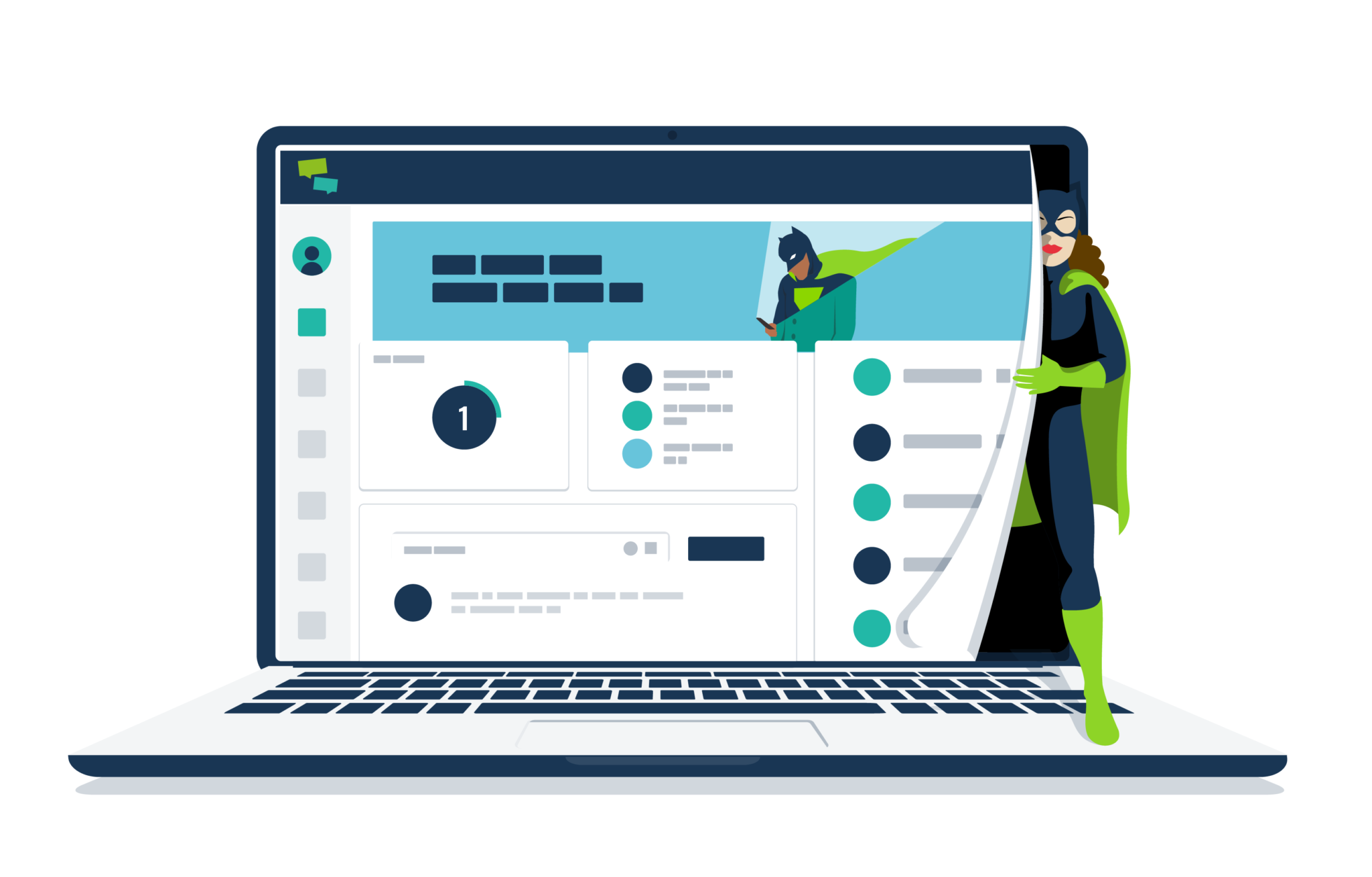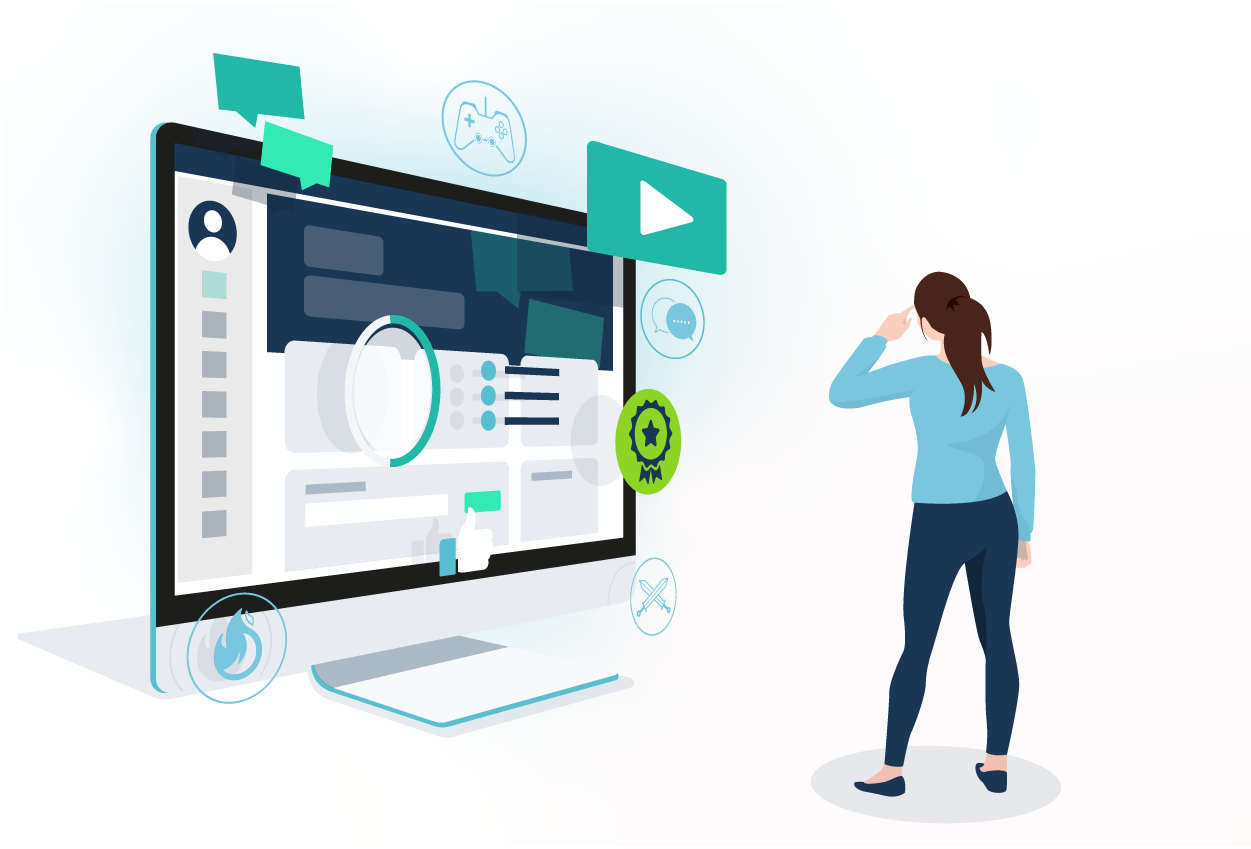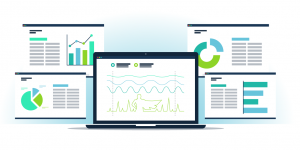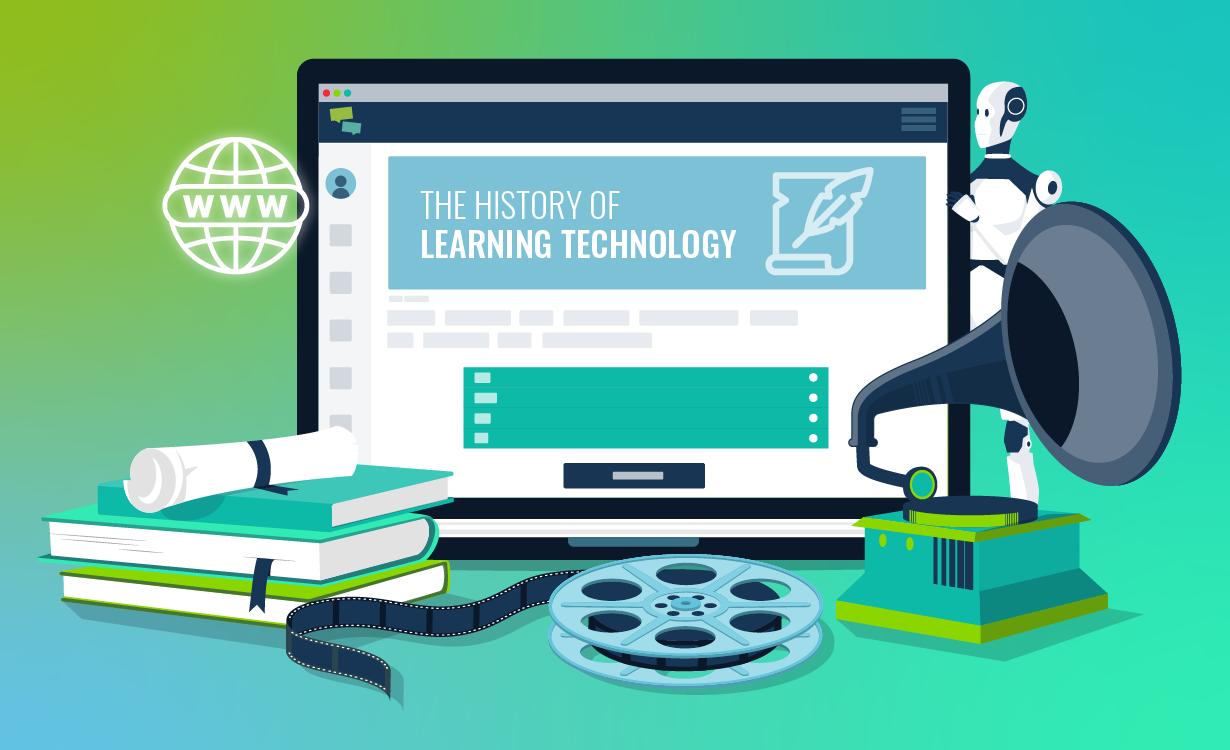 If you are reading this article, you’re probably looking for your first or next learning management system (LMS) and are ready to start your LMS implementation process. While choosing the right platform can be quite a challenge in itself, it’s just the beginning. You then have to set it up, test it, offer training and refine the process to be ready for the big day — launching your new LMS!
If you are reading this article, you’re probably looking for your first or next learning management system (LMS) and are ready to start your LMS implementation process. While choosing the right platform can be quite a challenge in itself, it’s just the beginning. You then have to set it up, test it, offer training and refine the process to be ready for the big day — launching your new LMS!
To get there, you need to have a plan in place. Having a proper implementation strategy for your learning platform will set you up for success in the future. If you have a detailed plan from the beginning, you have a better chance of creating a platform your end-users adopt and ultimately come to love.
However, implementing a new LMS is a relatively complex and detailed process. It requires care and attention. As such, you can’t just wish for the best and hope things will fall into place. Instead, you need to ensure your implementation team is ready to hit the ground running to make your LMS dreams come true.
To help you do so, we have created this article detailing a 15-step LMS implementation process. While there is a lot to do before you can launch your LMS, the benefits far outweigh the efforts you put in. And remember, these steps are achievable by all!
This article, combined with our interactive LMS Implementation Checklist, will get you off to a flying start!
Let’s go!
Project Implementation
Investing in new software is an exciting time! But with it comes the great responsibility of getting it right. And that’s where proper project implementation comes in.
Implementation is the process of turning your strategies and plans into action in order to accomplish your organisation’s strategic objectives and goals. Implementation planning has a huge influence on the success of any project.
Investing in a learning technology solution is no different. While learning technology, such as an LMS, has various advantages, it too requires a significant investment. Therefore, implementation is not something you want to skimp on. In fact, setting up your platform is the most important part of any successful online training programme.
15 Steps For Successful LMS Implementation Process
We get it. LMS implementation process can feel like a tedious task. After all, it is a detailed and hands-on process. Luckily for you, we have formed a 15-step process you can follow to make sure you implement your new LMS successfully and efficiently.
Step 1: Create a Project Plan
The Little Prince’s author Antoine de Saint-Exupéry once said: “A goal without a plan is just a wish”. The same could be said when implementing new software. Transforming your goals into success starts with a proper strategy.
Did you know that 70% of organisations have suffered at least one project failure in the previous 12 months? To avoid any pitfalls, the best way to start your LMS implementation process is to strategise and formulate a plan.
At the heart of your plan should be your objectives. You should have a clear understanding of what your organisation wants to achieve. Focus on rallying resources and working on the blueprint for your project.
Detailed planning helps you to ensure everything is done in the correct order. As such, your implementation plan should include an overall implementation goal spiced with smaller milestones that lead towards your main objective.
To make your planning process easier, you can ask your vendor for their LMS implementation project plan. While this template may not meet all your needs, it gives you a good starting point. You should review the template based on your objectives. You can then discuss what steps you need to add or remove to make the template fit your needs.
When creating an LMS implementation plan, you should consider some key questions:
- What is the objective of your new LMS?
- What configuration options do you require?
- Does the LMS need to integrate with other solutions?
- How will administrators and end-users be trained to use the solution?
Step 2: Set Success Criteria
Setting success criteria for every project is extremely important. After all, success looks different for different projects and teams. If you know how to select and define criteria, you can get the best results possible from your efforts.
By success criteria, we mean the standards by which the project will be judged to decide whether it has been successful. Well-documented and approved requirements alone are not enough and do not cancel the need for setting up specific success criteria.
As such, it’s essential that learning professionals decide what good looks like early on. This will help them determine what metrics they will track and how this data will be collected. L&D professionals are constantly challenged with providing the return on investment (ROI) of their training initiatives. So, it’s important that they are ready and able to do so when the moment comes.
But defining success clearly and unambiguously is not always straightforward. As such, keep in mind that your success criteria are never set in stone. While it’s necessary to define them before you get started, be aware that your criteria may evolve with the process. Be flexible and revise and adjust your criteria if needed.
Step 3: Build Your Timeline
After you have planned your project and identified the scope of your LMS implementation process, it’s time to create a realistic timeline for the process. This timeline should detail when you intend to carry out each task.
Talking to your IT team and LMS vendor will help you to determine how much time the overall process will take from start to finish. You should also identify what milestones your team needs to reach by when.
Your vendor has a vast amount of experience implementing their LMS. As such, talking to them gives you a rough idea of the length of the process. This range is a great place to start when planning your own implementation timeline.
The implementation process length also depends on which type of LMS you choose. Our cloud-based LMS, Growth Engineering LMS, typically takes 6-10 weeks to implement. However, the timeline can range from 4-12 weeks, depending on the scope of the project. Factors like the number of user accounts and the complexity of integrations can influence your project timeline.
Remember that this plan is not set in stone. In fact, roadblocks often pop up along the way. You can prevent them from affecting your overall timeline by building in small time buffers for more substantial tasks like data migration.
As a result, if a delay happens, your entire project implementation won’t fall behind schedule. This is extremely important. After all, PMI’s Pulse of the Profession report highlights that only 52% of projects get finished within their planned time frame. Incorporating a risk management plan will help you to identify the potential risks and delays in more detail.
To get you started, answer the following questions:
- When would be the best time to go live with your new system?
- Do you have an existing driver such as an expiring contract or a critical business event?
- How much time do you anticipate your content creation or vetting taking?
- How many user profiles do you need to migrate into your LMS?
Step 4: Build Your LMS Implementation A-Team!

After you have set objectives, determined milestones and drafted a timeline, it’s time to decide who is in charge of what and when. In other words, you need to build an LMS implementation team that drives the project ahead with full steam.
It’s essential to build your team early in the process. This helps you to ensure you have enough resources available for each step of the project. After all, your team will be responsible for helping you set up the LMS, create new processes, evaluate the trial roll-out, and eventually launch your platform.
Your new LMS is likely to touch on several operations within your organisation. When you build your team, make sure to connect team members from various departments. This could include individuals from HR, IT, Customer Success and L&D teams.
Keeping the team as small as possible ensures that the process remains highly focused. Your dream team could include, for instance:
- Team Leader. In short, team leaders are responsible for setting strategy, delegating tasks and monitoring progress towards goals. They are often the leading force of your LMS implementation process.
- Project Manager. They should be responsible for tracking and managing each project stage and making sure they are completed within the timeframe.
- IT Expert. Including an IT expert in your team ensures you have the needed infrastructure to implement your chosen LMS. They handle, for instance, data security, data migration and integrations.
- eLearning Specialist. You need someone with extensive knowledge of the eLearning industry. They know how online learning creation works and are your top man in creating effective training interventions.
- L&D Administrator. They are also eLearning professionals but focus on LMS configuration and administration rather than course content or migration. Administrators are a vital part of your platform as they are responsible for keeping your LMS running after the launch.
Make sure that the expectations from each team member are clear. Every member should be entirely onboard with your overall objectives and their role in the project. After all, a big part of your programme’s success depends on your implementation team. Over one-third of all projects fail because of poor team communication and collaboration.
Establishing a communication plan ahead of time will allow your team to be transparent about where their tasks stand and if any additional resources are needed. It also makes it easier for team members to track the progress of your implementation process.
Step 5: Find Your Epic Meaning
Epic Meaning is all about creating a sense of purpose that fuels our passion for a cause. In short, it is the desire to do something that matters. And by harnessing the power of Epic Meaning, you can change learner behaviour and transform your organisation.
Your LMS has a prominent role in creating training that oozes Epic Meaning. It’s essential to communicate your company’s mission, goals and values at every stage of the training programme. This allows you to unlock deeper levels of relevance and drive learner motivation. In fact, 70% of business executives think that embracing your organisation’s mission can have a great impact on employee productivity.
Learning management systems offer an excellent opportunity for meaningful internal branding. As such, before you jump to content creation or are ready to launch your LMS, you need to focus on its theme.
You can do this by defining the brand and concept of your LMS, including its name, look and feel. Customising these aspects of your learning management system ensures it resonates with your learners.
Let’s take Growth Engineering LMS as an example. Within the Admin Panel, you can adjust the design and build an LMS that reflects your company’s identity. For instance, you can change colours, titles and labels, use tailored wording and upload custom dashboard and level banners.
Wherever possible, you should seek to tailor your platform. Don’t just stick with Level 1, Level 2, Level 3 and so on. Coming up with something more exciting will resonate with your audience.
You can also define a custom name for your platform and a unique website domain. This is another way to give your platform its own identity and give your learners a system that was built just for them.
Step 6: Train Your Admins
Administrators are a big part of the long term success of your platform. They are the people who ensure that your system keeps running smoothly and manifests a sense of purpose.
At this stage, you should focus on admin training. Regardless of how tech-savvy they might be, your Admins need to learn how to use their new LMS. Only then can they become your LMS’ internal experts. They need to know the system inside out better than anyone else using the solution.
With so much to learn, administrator training is hugely important. The more they know, the more confident they will feel rolling out new content or entire training initiatives.
An excellent way to provide Admin training is to create microlearning modules on how to interact with the learning management system in the most efficient ways. You can also use these modules later to get your end-users familiar with the platform.
Some LMS vendors, like Growth Engineering, provide Administrator training and certification programmes that customers can participate in. Make sure to take advantage of this training as much as possible.
For instance, our interactive sessions focus on mapping your specific use cases to the functionality available on the LMS. We provide training and certification on all functions available to ensure our Admins have all the skills they need.
Step 7: Prepare for Data Migration
Step seven (and eight) is all about data! Whether you are moving from another system or implementing an LMS for the first time, migration is an essential step.
At this step, you should start migrating data from other platforms into your new LMS. Data and course migration is one of the most complex stages in the LMS implementation process.
Before getting started, you should consider what data you would like to move over. Data migration will require hands-on efforts from your IT department and LMS vendor. They will need to account for which assets, courses and data you’ll be transitioning into your new system. This could include saving or exporting content from your old solution and moving it to your new LMS. For instance, you might want to migrate user data or course software.
A common practice is to migrate as little data as possible to avoid roadblocks and errors. Still, you need to reserve some time for data migration. Even SCORM compliant data may require some adjustments. As such, data migration can impact your overall LMS implementation timeline.
You can prevent data loss by breaking up the data migration process into smaller steps:
- Migrate small samples of data to test that migration programming is working properly.
- Determine what data you need to migrate.
- Migrate all the data necessary.
- Transfer any additional data that was added or manipulated since step two.
Step 8: Determine Your Integration Needs

Delivering effective content may seem like the obvious key to the long-term success of your LMS implementation. But in reality, it is often as much about data and technology as it is about anything else. As such, at this step, you should identify whether you will need to integrate your new learning platform with any systems in your existing software stack.
Integrating your LMS with the apps or software you are already using helps make your life even easier! For example, Growth Engineering LMS and Learning App are integration sensations. Typical integrations include, for example, user provisioning by connecting with an HR system, CRM and solutions that aid in eCommerce services.
Your data has never been more portable, which helps you to connect your LMS with your other business systems. Our well-documented series of APIs and webhooks make integrations easy, which saves your precious time. We even provide custom integrations if they will help you achieve your training goals.
Step 9: Focus On Site Configuration
Site configuration is an essential part of the implementation process. This is true regardless if you are implementing an LMS for the first time or switching from another solution. A key decision centres on which courses, data and instructional assets you need and how these elements relate to each other.
You have a strong understanding of the operations of your company and the necessary data for those operations. However, you may not have the same knowledge about the capabilities of your new LMS. As such, you should communicate with your LMS provider to understand the data fields and capabilities of your learning solution.
Some configuration decisions to consider are, for instance:
- What information is stored in user profiles?
- What user demographic data is needed to set up user groups.
- If you need multiple domains for different audiences.
- What is the appropriate access permission for each user?
- Can settings and features be turned on and off if needed?
- What are your reporting requirements and can these steps be automated?
Step 10: Create Your Engagement Plan
Rejoice! You are getting closer to launching your new learning solution. As such, it’s time to focus on engagement! After all, what good is a shiny new platform if nobody uses it?
First, you should approach your LMS vendor to identify and get familiar with the engagement features they offer. You can then determine which engagement approach fits best with your training programme.
You need to get your learner engagement strategy right to create a successful online learning initiative. Here at Growth Engineering, learner engagement is a topic very close to our hearts. Everything we do is meticulously designed to engage and motivate learners. To achieve this, we use approaches like gamification and social learning.
Gamification means taking elements from games and adding them to less exciting contexts to make them more interesting. Mechanics like Experience Points, Badges, Levels and Leaderboards are an excellent way to spark engagement.
You could even utilise learning games to appeal to our natural desire for competition, collaboration and mastery. In addition, rewarding your learners with real world rewards appeals to their extrinsic motivation. With all these tools at your fingertips, it’s no surprise that gamification can increase engagement by 60%!
Similarly to gamification, social learning makes learning more fun and promotes increased learner participation. Our LMS uses pioneering social features, like Social Feeds, Live Chat, Clubs and an Experts Area. These features help learners test their knowledge and share their expertise.
Social learning is also essential for preventing your intellectual capital from leaking out of your organisation. Did you know, loss of intellectual capital costs Fortune 500 companies over $31 billion every year? By getting your engagement strategy right straight away, you can rest assured your learners find even more value in your organisation.
Step 11: Prepare And Upload Content
 Perhaps unsurprisingly, preparing and uploading content is one of the fundamental steps of your LMS implementation process. After all, with no content, no formal training can take place.
Perhaps unsurprisingly, preparing and uploading content is one of the fundamental steps of your LMS implementation process. After all, with no content, no formal training can take place.
Firstly, you need to identify whether you will use in-house or pre-built ‘off-the-shelf’ content. If you decide to prepare your training content yourself, you’ll need to determine what types of content you wish to use.
For example, our LMS supports various content types, including SCORM-compliant eLearning, videos, audio files, PDFs, documents and more. And remember, variety is important in order to keep your learners engaged.
Don’t have enough resources in house to produce your own content? Not to worry. There are plenty of vendors who can provide you with ready-made content that tackles all the topics you need covered. Business skills, mental wellness, diversity and inclusion and more. The list is endless.
The next step is to have a set of LMS compliant training content ready to go and upload it onto your LMS. You then need to determine the structure and format of your courses. Categorising and tagging your content with keywords makes it easier for your learners to search for the right material. And using content groups ensures that the right learners have access to the right content.
Make sure to get feedback from some of the content you have created. This allows you to gather valuable information, which will help you to launch your new LMS without hiccups. If your learners don’t find value in the content you provide, they won’t take the time to return to their learning platform
Furthermore, you need to make sure your content is optimised for all device types. In fact, the key to successful training is to make sure your courses are both engaging and accessible.
As 3.80 billion people in the world have smartphones, it is clear that mobile devices play a big role in our day-to-day lives. By ensuring your learners can access training on the go, you can guarantee there is nothing to keep your learners away from their training.
Step 12: Have a Trial Run

Step 12 is all about trialling your platform and evaluating the experience So, test, test again and test some more! We know you are eager to get your platform launched and to share the fruits of your labour with your learners. But if you do this before conducting a trial run, you risk unleashing a poor user experience on your unsuspecting audience
Conducting a pilot launch involves asking a small group of users to trial the platform and provide feedback on their experience. You need to make sure this team does not include individuals who are part of the LMS implementation process team. This is important, as you should be seeking feedback from people who are not familiar with your LMS.
Your trial team should follow a typical learner journey to see how effectively your LMS helps to meet your training use cases. You should also use this opportunity to check that all integration work is working as expected. Is the data moving in the right direction at the designated time intervals? Great! Tick that box and move onto your next task. It’s essential to conduct these tests before any end-user touches the platform for the first time.
Pilot launches have various benefits. For instance, the feedback you get helps you to identify any errors or issues with your platform configuration or processes. You can uncover what doesn’t make sense, what is confusing and what needs fixing prior to launch. After documenting any issues that come up, make sure to report them to your implementation team and your LMS vendor. That way they know what improvements to focus on.
Step 13: Refine Your Solution
Your LMS trial run should have given you some comprehensive feedback. This feedback tells you what you need to work on and how ready your learners are for an organisation-wide roll-out of your new platform. And even better, it gives you insights into how your LMS platform can be of real value to your company.
Like any learning cycle, getting feedback and evaluating the pilot programme is extremely important. Creating a winning learning environment is a marathon, not a sprint. You don’t want all your hard work to go to waste in the last few metres! As such, at this stage, you need to evaluate the feedback and refine your processes based on it.
This feedback helps you determine what kind of training your internal and external users need to utilise your LMS to its full potential. Your LMS vendor will be able provide guidance and share any relevant training materials.
Once you’ve refined your learning platform, you can define the date for your final launch and start focusing on preparing for the big announcement. You are nearly there!
Step 14: Focus on PR

After all your hard work and effort, you need to make sure your users know about your new platform and its associated benefits. It’s time to focus on PR and announce the exciting news!
In addition, it’s essential that all stakeholders know about the upcoming launch. As such, alert them about the launch date, and inform them about any other necessary information. For instance, will there be a phased launch? Will there be a blackout period? What content will be available at launch?
Where possible, you should pull from your previous pilot launch. For instance, the feedback you collected can help you create some amazing testimonials. You can use them t0 generate hype around your learning programme. You can use them to get excitement and buy-in and to create your LMS marketing plan.
For instance, flyers, videos or merch can be an effective way to create engagement. You can even host a launch party or use platform advocates to encourage other learners into action. Soon you will have a buzzing hive full of learners excited to start their learning journey!
Regardless of how you share the good news, it’s essential to ensure your learners know how to access the platform. And make sure to have material ready for when they log in the first time. After all, you need to help your learners get familiar with their new platform.
Step 15: Finish Your Implementation Process and Launch Your LMS
Congratulations! The last step is your moment to shine. You are ready to launch your new LMS. And as a result, your company will start to benefit from all of the hard work you put in! In fact, the success of your initiative will now depend on how much value it brings to your training programme.
Switching to your new LMS can be accomplished in several ways. This includes a complete changeover done overnight, a gradual phase-out of the old system and a phase-in of the new system or running both systems in parallel before the final changeover. The best solution depends on the needs of your learners, your timeline and your overall goals.
However, the journey doesn’t end here. Implementation and onboarding is just the beginning to excelling in your learning transformation. As such, you should focus on progressive improvement. In fact, we think that the number one LMS best practice is to have a continuous growth mindset.
There will always be something that you and your team can improve. To be able to do so, you need to gather feedback and analyse data regularly.
While user satisfaction surveys don’t tell the entire story of how well your LMS performs, they do provide you with some meaningful insights. Asking the following questions can help you to wrap up your LMS implementation process and move on to building a flawless online training programme:
- How many users have logged onto the system?
- Have they progressed and how far?
- How many courses have they completed?
- How did they score?
Final Words
The LMS Implementation process is a detailed job. After all, you want to make sure your new LMS serves your organisation’s training needs to the fullest extent. Luckily, if you follow these 15 steps, you can guarantee you will successfully implement your new learning management system.
And once you’ve got an effective learning solution in place, there’s no limit to what you, your users and your organisation can achieve.
And to make the process even easier, we have created an interactive LMS Implementation Checklist. Download it now to ensure you’re ready to hit the ground running!








